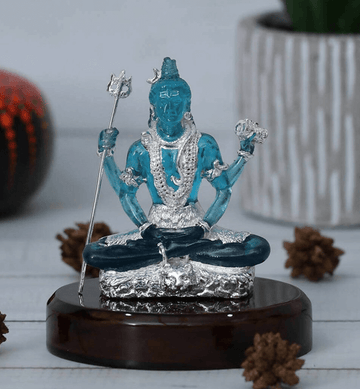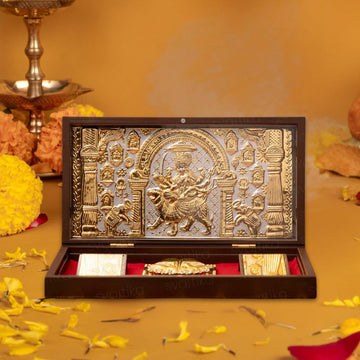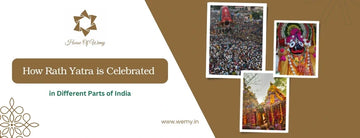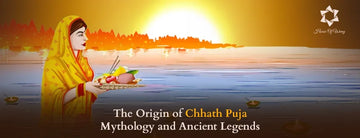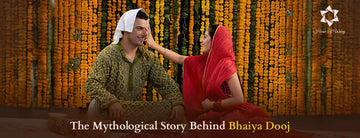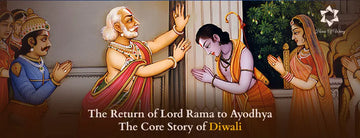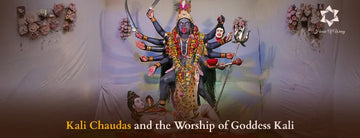Exploring the vibrant diversity of Jagannath Rath Yatra celebrations across India, where ancient devotion meets regional spirit.
Top 6 places in India to Witness the Grand Rath Yatra

Introduction: A Journey of Faith That Unites a Nation
When the heavy chariots of Lord Jagannath roll out of the temple gates, they carry more than deities; they carry centuries of devotion and emotion and the collective heartbeat of millions. Rath Yatra is not some kind of "religious" procession. It is India on the move.
From the wide roads of Puri to the narrow gullies of Bengal, and now to balconies in faraway countries where Indians recreate the ritual with paper and string, the chariot festival celebration connects hearts across national boundaries. Rath Yatra is also a reminder to something we think is important to remember in an age of haste: when the Divine comes out to meet the people, it's a moment we have to stop, pull, and participate.
Cultural & Ritualistic Significance: The Pull of the Divine
According to Hindu scripture, there is an account of the Rath Yatra. As per the two texts of the Skanda Purana and the Padma Purana, Lord Jagannath is incarnated from Lord Vishnu, and His Yatra with His siblings Balabhadra and Subhadra is His annual journey to the Gundicha temple, believed to be the abode of their maternal uncle.
But this is not just a journey in the ordinary sense. This is an anugraha, Divine Grace. In Hindu scripture, the Lord is often encased in the sanctum sanctorum in the temple, and therefore Lord Jagannath's benediction at the Rath Yatra actually reverses this ordering as the Lord leaves His place of position on the Throne and steps into the street. This is karunya, a cosmic act of love and inclusion.
The festival components all have spiritual significance:
- The three chariots are not just chariots; they represent the triads of life: Dharma (duty), Bhakti (devotion), Karma (action).
- Pulling the chariot is not a ritual; it is a spiritual way to pull your ego from inertia toward the Divine and is a metaphor for this process. You are not just pulling wood and wheel; you are pulling your ego.
- While the deities are made from neem wood, there is a ceremony carried out every 12-19 years known as Navakalevara, which replaces the deities. This change is a lesson in impermanence: even the body of God can change, but the soul remains unaffected.
How Rath Yatra is Celebrated Across India
While Puri is the heart of the observance, Rath Yatra celebration India occurs throughout India, each in a unique way, yet directed toward the same spiritual source. Let us take a look at how the Rath Yatra diversity in India takes many forms yet returns to the same spiritual core.
1. Odisha-Holy Pulse of the Festival
The Odisha Rath Yatra is more than a festival; it's an active culture that has been part of the character of Puri for thousands of years.

Every year, there are three magnificent chariots that are built.
- Nandighosha is dedicated to Jagannath (16 wheels);
- Taladhwaja is dedicated to Balabhadra (14 wheels);
- Darpadalana is dedicated to Subhadra (12 wheels).
Thousands of devotees pull the chariots barefoot while singing kirtans and chanting "Hari Bol." The festival features a Chhera Pahanra ritual in which the king of Puri sweeps the chariot way with a golden broom, to remind us that all rulers and people, for that matter, are but servants in front of the Divine. The deities travel from the Jagannath Temple to the Gundicha Temple, where they reside for nine days before returning to Puri in a return yatra called Bahuda.
The Jagannath Yatra customs here are world-famous and attract many devotees and seekers, whether they are walking spirits, accountants, engineers, musicians, clowns, or others. It is also a rare time when non-Hindus can see Lord Jagannath, as at all other times he resides in a sanctum, which only Hindus are allowed to enter.
2. Gujarat: A Grand Parallel Celebration
The Rath Yatra holds great value, especially in Gujarat and Ahmedabad. It commences from the fabled Jagannath Temple, which has existed for over 400 years, in the Jamalpur area of the city. The journey necessitates a 14-kilometer route through the city.

The day begins with the Mangla Aarti, and then begins the Royal Pahind Vidhi, which entails the cleaning of the path the chariots are to take. The Rath Yatra in Gujarat consists of:
- Decorated elephants
- Camels and tabla processions,
- Akhadas performing martial arts,
- Local bhajan mandalis singing devotional songs
With tens of thousands that throng the route, allowing thousands to participate, the security arrangements are as detailed as if it were a state election. Gujarat's Rath Yatra stands as an example that devotion can grow to scale while retaining the sanctity of the experience.
The festivities are quieter in Dwarka, the ancient city of Lord Krishna. Temple priests will dress the Lord Jagannath Idol in silk clothes of yellow and red amidst the fragrance of sandalwood and tulsi incense.
3. Bengal: A Tradition Deeply Rooted in Bhakti
West Bengal’s connection with Rath Yatra dates back to the Bhakti movement. Towns like Mahesh (in Serampore) host one of the oldest Jagannath Rath Yatra states outside Odisha, with roots going back over 600 years.

The idols are placed on elaborate raths built by local craftsmen using age-old designs. The event includes:
- Traditional folk performances,
- Community kitchens (bhog prasad distribution),
- Children’s plays based on Jagannath Leela,
- Evening artis that light up the entire neighborhood.
Here, Rath Yatra isn’t just a festival; it’s a generational memory. Every family has a story of how they celebrated as children, and they pass on the same joy to the next generation.
4. Maharashtra & South India: Quiet but Soulful Celebrations
In cities like Mumbai, Chennai, and Hyderabad, the ISKCON temples lead regional Rath Yatra traditions. While they may not match Puri in size, the emotional resonance is equally profound.

These processions are designed for modern urban settings:
- Eco-friendly raths are pulled through local roads.
- Youth groups perform kirtans and street plays.
- Devotees from diverse backgrounds, students, techies, and homemakers gather to chant together.
Even in these metros, the chariot carries not just idols but the essence of timeless bhakti, illustrating Indian festival variations beautifully.
Recreating Rath Yatra at Home: A Simple Guide
Not everyone is able to travel to Puri or Ahmedabad, but that doesn't mean everyone cannot feel the sacredness of Rath Yatra.
Here are some ideas for celebrating at home:
- Install a Lord Jagannath Idol. Buy the idol set of Jagannath, Balabhadra, and Subhadra that is in the traditions of idols. Place it in the eastern part of your prayer area. Their smiling eyes help bring peace and divine protection.
- Make a Small Rath: Use wood, clay, or even cardboard. Let children decorate it with rangoli, paper flowers, and handmade flags. It becomes a joyful family activity rooted in spiritual learning.
- Offer Traditional Bhog: Prepare foods like khichdi, dalma, and poda pitha. Offer with tulsi leaves and chant mantras before distributing it as prasad.
- Mini Procession: Move the idol on the mini rath on your balcony, courtyard, or living room, chanting. What matters is not the size of the rath, but rather the magnitude of your love.
Astrology & Numerology: Cosmic Alignments of Devotion
As tradition has it, the Rath Yatra happens on the Dwitiya Tithi, which is the second day of Shukla Paksha in the Ashadha month, which means its astrological alignment comes from Mars and Jupiter. Mars is the planet of energy. Jupiter is the planet of wisdom.
- To pull the chariot on this day is thought to mitigate Mangal Dosh and assist in karmic resolution.
- The number three deities, three chariots, is sacred in Vedic numerology, as it embodies the harmonious connection between physical, emotional, and spiritual planes.
Additionally, it is said that keeping a Lord Jagannath idol in one’s home during Rath Yatra events helps foster clarity, courage, and calm.
Wemy’s Offering: Spiritual Art for Modern Homes
At The House of Wemy, we honour this ancient tradition with ethically sourced, handcrafted Lord Jagannath idols, curated to bring cultural depth into your modern space.
From miniature rath sets for children to terracotta incense holders and festive diya trays that reflect the Rath Yatra celebration India is known for, our products are designed to keep your connection with Indian heritage alive, subtle, soulful, and timeless.
The Deeper Connection: What This Festival Really Teaches Us
A Wemy customer once shared that when they moved to London, they felt spiritually adrift. One Rath Yatra, they created a chariot out of a shoebox and paper wheels, and their child pulled it through the living room, singing “Jai Jagannath.” That was all it took to feel rooted again.
This is what Rath Yatra diversity gives us a chance to realign with what truly matters: movement toward God, no matter how small the step.
Final Thoughts:
The jagannath Rath Yatra states across India aren’t about geographical difference; they’re about the many beautiful ways love for the Divine expresses itself.
So this year, ask yourself: What does your chariot look like? Is it grand and ceremonial or humble and heartfelt?
Whichever it is, as long as it’s pulled with devotion, you’re already on the path.
Explore our Jagannath collection and discover how tradition can live beautifully in your modern home.

